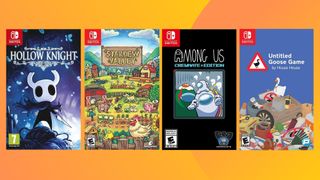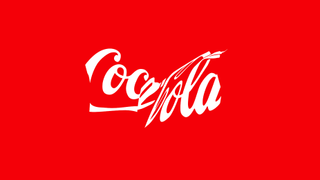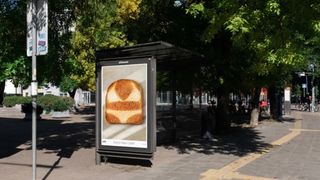Guerrilla marketing means many things to many people. For some, it's flyposting or stickering yard after yard of wall space with a particular design. For others, it's about reaching movers and shakers, the collective influencers among a particular group for the least money possible. For yet others, it's a spectacular public stunt that's guaranteed to draw press attention.
But trying to define guerrilla marketing precisely goes against the grain of its whole concept. The term was originally coined and popularised by Jay Conrad Levinson in the early 80s in his eponymous book, soon followed by many others (Levinson describes himself as "the father of guerrilla marketing").
Low-budget promotions
As described by Levinson and as originally practised, guerrilla marketing was specifically aimed at smaller businesses who didn't have the sizeable budgets of larger firms and thus had to devise more unconventional, imaginative ways of getting their product or service across. GM was about understanding human psychology, using your contacts and knowledge to their fullest capacity, and building word of mouth in any way possible.
While the lower-budget aspect is still certainly important to many clients, these days much GM is based around very public and often unusual stunts that aim to surprise or shock. 'Word of mouth' has mostly been replaced by 'in your face'.
For example, when GM specialists Alt Terrain plastered 16,000 static-cling butterflies around New York overnight for the launch of Microsoft's MSN 8 service, it guaranteed plenty of press coverage. But in some ways this was almost directly opposite to the original aims of GM, which was to use your resources intelligently and subtly to the maximum effect. And the idea that GM is the sole province of small businesses has certainly long gone.
"What worked in guerrilla terms a few years ago probably won't pack such a punch today, so our tactics need to keep pace with what makes consumers tick," explains Anna Burles, Creative Director at Jack Liberties, the collective responsible for the bat stunt pictured here. The company describes itself as a maverick ambient marketing agency specialising in putting the word on the street by any appropriate means - including guerrilla marketing.
Challenging campaigns
"At its most basic level, a guerrilla marketing campaign is successful if it has forged a connection between brands and consumers when consumers are most in 'the mood' to listen," Burles continues. "The most exciting guerrilla marketing campaigns, though, don't just get a strong visual message out there in a surprising way - they also challenge people to steal it, engage with it, respond to it, or, better still, add to it co-creating something unique."
Get the Creative Bloq Newsletter
Daily design news, reviews, how-tos and more, as picked by the editors.
Jack Liberties approaches this in a number of ways. At one extreme there was a 'tease and reveal' campaign for the Brazilian spirit Sagatiba, which initially involved huge, Christ-like murals with no other branding appearing on London walls. At the other extreme, some companies prefer playing with their instantly recognisable branding in new ways, such as the campaign for Red Bull. For this, Jack Liberties created bowler hats and cases from the iconic drink can, and challenged the public to come up with its own creations.
"At the end of the day, guerrilla marketing lives or dies by the quality of the creative execution," believes Burles. That execution can vary dramatically depending on the brand's target market, whether the branding is already well-known, and other factors. And it may well be the case that guerrilla marketing or similar tactics just don't work for a particular brand.
"Many brands will dictate exactly how a logo or message must be used and it won't vary hugely from the mainstream campaign," Burles continues. "Others are far more open to interpreting their brand and brand messages specifically for the 'street' or 'ambient' campaign. Logos might be simplified or not used at all."
As obvious as it may seem, it's important for any campaign to be noticed or, as Burles puts it, "It's no good having created something amazing on the street if nobody knows it happened outside of the 200 people who actually witnessed it."
Advertising or vandalism?
Thus, no matter how clever or striking a campaign is, it's important that it gets noticed in a wider context. In the recent past, local or national press coverage was almost guaranteed for some forms of guerrilla marketing, simply because they were carried out illegally. Many flyposting, mural and sticker campaigns have incurred the wrath of local residents who see them less as advertising and more as vandalism.
"Engaging in that kind of activity is a calculated risk on the part of everyone involved," says Burles. And while the old saying that there's no such thing as bad publicity might still apply, the trend these days is to do things by the book.
"A lot of guerrilla-style campaigns these days are carried out with permission, designed to look like an edgy underground campaign, but actually completely legit," she says. "Authorised flyposting is a perfect case in point - it has all the look and feel of an old-school flyposting campaign, but actually is nothing of the sort. Posters are wet-rolled onto designated hoardings and drums, with full council approval."
Ambient media
Perhaps more closely tied to the earlier definition of GM is what has recently been dubbed ambient media/advertising. This refers generally to branding and ads that pop up in places where you wouldn't normally expect to see them: supermarket trolley handles, receipts, eggs, clothing tags - anything in the environment that the public uses on a day-to-day basis, usually without even thinking about it.
At its best, ambient media is more subtle and more long-term than GM, creating a gradual brand awareness through repetition and intelligent placement of appropriate branding.
Don't Panic is at the forefront of ambient media, mainly due to its Don't Panic Pack, a free publication distributed to various influential bars, shops and universities in London and other cities. The pack itself is a mixture of thought pieces, arts and culture information, flyers, stickers and so on, together with a poster showcasing both established and budding designers.
The pack works because of its inherent quality. Unlike a lot of other freebies, it aims to be genuinely collectable, readable, and design-savvy, attracting the key target market of young, influential, relatively rich movers and shakers. Thus the poster has featured designs from the likes of Airside, Banksy, Pete Fowler and Insect, while the pack often contains samples such as sweets, condoms or CDs. Ultimately, it's a marketing and branding tool, but one with a genuine design ethic.
For Don't Panic Media, the key to successful ambient marketing is an immediate call to action, and placing the right material in the right locations. "If you notice when you're on a tube, quite often there are adverts which say 'Text this number to find out more'," says the company's Joseph Wade. "But then of course you're on a tube, underground, where it doesn't work so it's completely pointless.
"We use similar environments where people are relatively static, such as sitting in a bar or in a shop waiting for someone to come out of the changing room. Record shops have those dividers in the racks which separate the different artists, and we've done some of those for O2, offering free music downloads."
Now Don't Panic is moving into other areas of ambient media: in-store. "That involves things such as swing-tags on clothes that we've done for credit card companies," explains Wade. "The idea is that when you're about to shop, seeing the brand may induce you to use or apply for this card.
"One big project coming up is for PSP, called Gamers of London. For that we apply 'bullet holes' to windows of shops, then follow up with various clues in bars and shops - it could be fake police tape and chalk on the floor - which lead you on to the website for more clues. Eventually that leads you to a physical location for the payoff. This is all done in quite hard-to- reach environments [for advertisers], such as independent bars and universities."
Wade acknowledges that Don't Panic's own style of ambient media may not particularly work in a large, corporate chain store or franchise pub, and cautions against corporate brands trying "to buy into 'cool'." He continues: "Maybe they have a large party down Brick Lane with live art and bands and a DJ. I don't know if that necessarily reflects in an upturn of sales. However, things like that can be good for changing the perception of a brand, particularly if they genuinely adopt that image from then on.
"It is better to tailor things specifically and not try to stick specifically to your brand guidelines. At the same time, it's a bit sad if you just get a graffiti artist to do a display or something."
Perhaps unusually in this field, accountability and responsibility to everyone, not just its paying clients, is important to Don't Panic. "I find it appalling when someone descends on an area and covers it with stickers," says Wade. "I don't think anyone - not a brand, anyway - has a right to essentially vandalise an area."
Cleaning up the streets?
"There was an interesting Adidas concept in Brixton recently where the pavement was spray-painted clean within a stencil using high-pressure water jets," says Wade. "So you clean a logo onto the floor instead of spraying it with paint. I like that - it's more moral." Lambeth Council clearly didn't agree - it threatened to take legal action against the sportswear maker. In typical guerrilla fashion, Adidas would neither confirm nor deny that the logo was created by them.
Ironically, just as guerrilla and ambient marketing are becoming ever more mainstream, some agencies are moving away from them. One such is Cunning, a veteran of guerrilla marketing which was experimenting with such ideas long before the terms were even widely used.
Perhaps most famous of these is its involvement (with BBH) in the promotion for FHM magazine's 100 Sexiest Women of 1999, which saw a 100ft high picture of a nude Gail Porter being projected onto the Houses of Parliament. That little exercise guaranteed acres of press and was voted Stunt of the Century by the BBC.
Other notable examples include a series of fake street signs for Q magazine, a sponsor at Glastonbury 2003, directing visitors and subtly building up to revealing the famous Q logo. Fake signs were also used to 'brand' six of the country's most dangerous roads for BF Goodrich.
Cunning tactics
But now Cunning is about to change, as new Creative Director David Dao explains. Dao originally worked at M&C Saatchi before it grew enormous and he's fresh from working at TBWA London almost exclusively on PlayStation branding. His task at Cunning, he says, is very different: to reposition the agency from a guerrilla marketing specialist to brand-building communication agency.
"In the past, a lot of Cunning's clients have come about as a result of companies hearing about our guerrilla marketing stuff, calling us up and asking for something similar," says Dao. That, he believes, is not necessarily the way it should work.
"So we're not an ad agency. We're not a marketing integrated agency. We're not a 'below the line' or 'through the line' agency. We're not an online agency. We're not a guerrilla marketing agency. We're not an experiential agency. We just do brand communication. The difference is that we don't label ourselves with any particular media strategy. We just create brand strategy, then think of ideas to communicate that brand strategy."
In Dao's terms, Cunning has "grown up, matured and is in the middle of reinventing itself. I think it [guerrilla marketing] was something that was interesting in the 1990s. The spirit of guerrilla marketing now lives online."
But even if the shock of the new or the subversive can no longer solely justify these forms of branding, there's plenty of life left in them yet. After all, no sensible agency abandoned print advertisements entirely just because the radio and TV came along - they adapted, and used each medium to its own particular strength. And those creatives who can do the same with guerrilla marketing or ambient media or other promotional stunts should still be able to flourish, in new and - hopefully - ever more interesting ways.




